


1926 Japanese Army Tank Oil Painting / Middle School Students/ Military Art work
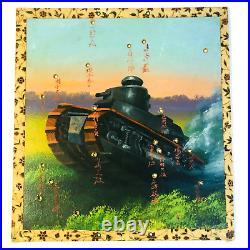
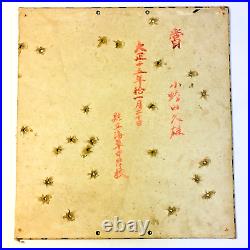
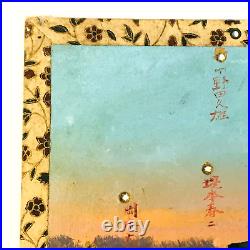

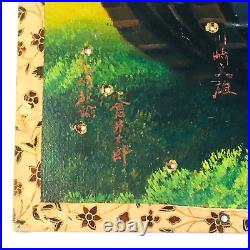

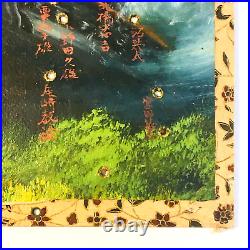

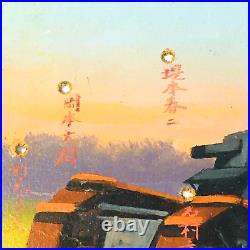
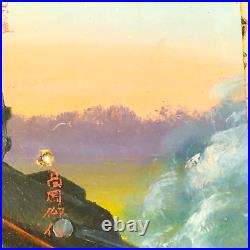
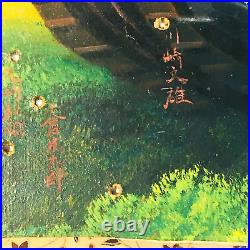
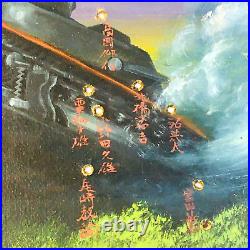
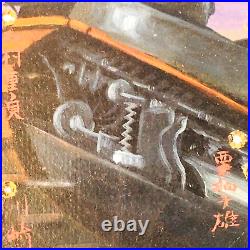
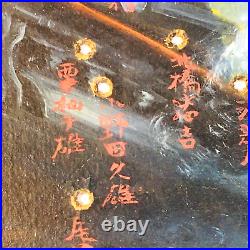

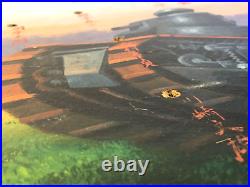
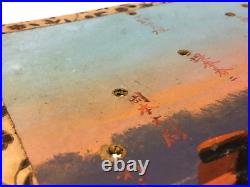


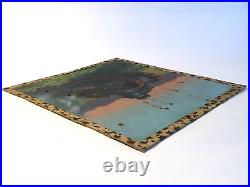
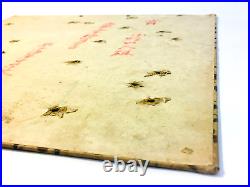
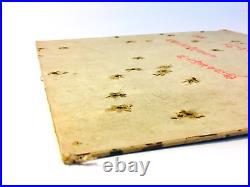


This is Japanese M ilitary art, War art. This is an oil painting of a Type 89 medium tank created in 1922 on paperboard. Its size is 333×307 mm. It appears to have been used as a target for airsoft guns during military training at a junior high school, and awarded to outstanding participants. On the reverse side, there are inscriptions with the recipient’s name “Hisao Onoda, ” the school name, and the words “Award” and November 20th, Taisho 11. On the surface, there are bullet marks with the names of students and the instructor (Captain Okamoto). In the middle of the tank’s body, there are marks with the recipient’s name “Hisao Onoda” and his shooting. He likely targeted and hit the tank’s engine area with his shots. Please judge the details from the image. For second-hand goods, be sure to check the photos! Thank you for visiting! I’m listing a variety of items, with a focus on vintage Japanese toys such as Menko and trading cards, among other things. If you’re looking for a product, please feel free to inquire, regardless of the genre. I will search for what you’re looking for and provide a listing. Here is my product list. Please rest assured that I will pack everything carefully. We are located in Japan. It’s our pleasure to make you happy by proposing our recommend item. If you have any questions or request about items, please feel free to ask us. Our products are 100% Authentic. We are really glad to have a deal with people all over the world. International Buyers – Please Note.


Japanese Red Cross Order of Merit. MDJ78
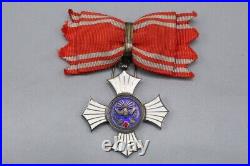
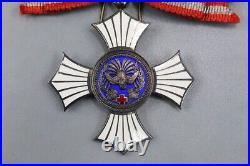

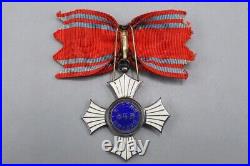
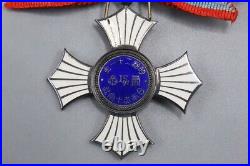
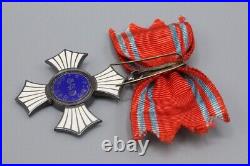
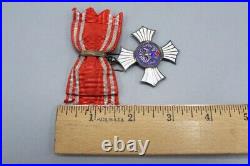

Japanese Red Cross Order of Merit on Women’s Bow ribbon in extra Fine to Near Mint Condition with special pin mounts attached.


Japanese 1931-34 Manchurian Incident War Medal Cased. NNJ263
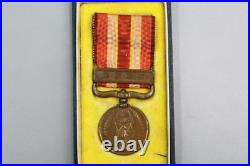
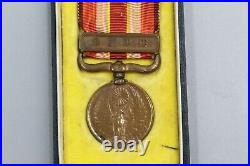

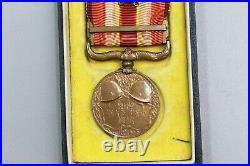

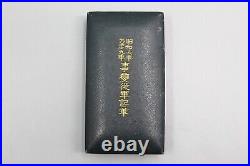
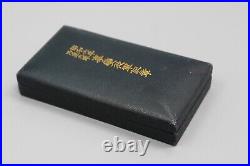
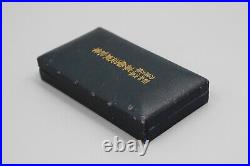
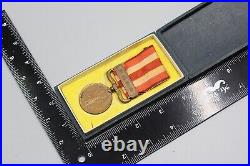

Japanese 1931-34 Manchurian Incident War Medal in case. Medal has the original ribbon with hook and eye attachment. On the bar is written “Military Medal of Honor” reading from right to left. Medal is in hard-shelled box of issue with recessed portion for the medal and golden kanji on top of case. Worn and used condition. The ribbon is decorated with the shade vine of Seocho, which appears in “Kojiki”, to express the honor of the incident. The crimson color means the intense loyalty, the red sincerity of the Yamato people and the Japanese flag and the yellow color means the birth (of the Nation) of Manchuria.


1926 Japanese Army Tank Oil Painting / Middle School Students/ Military War Art
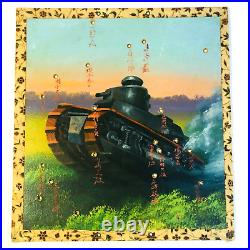
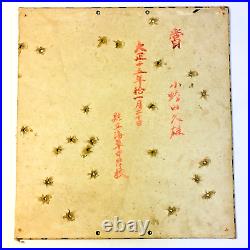
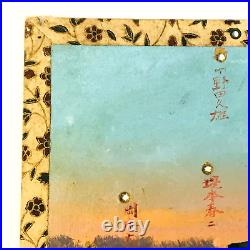

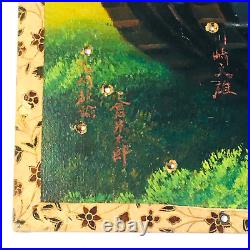

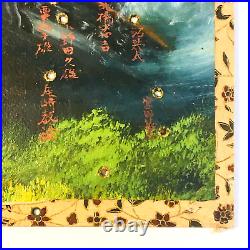
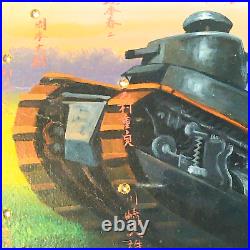
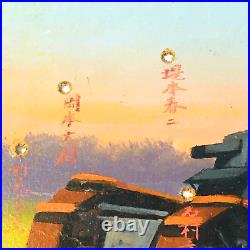
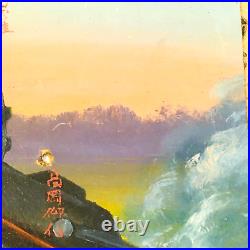
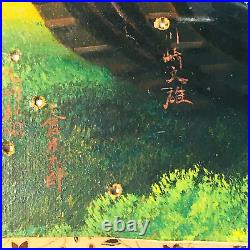
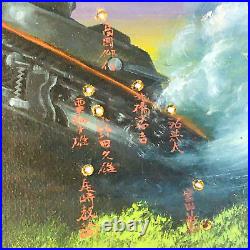
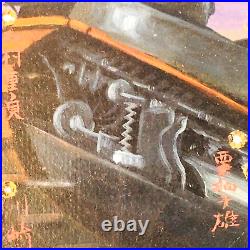
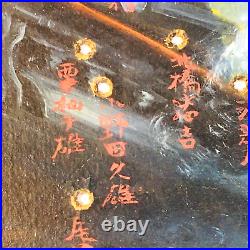
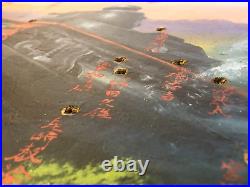

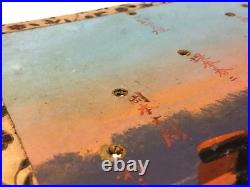


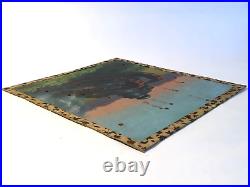
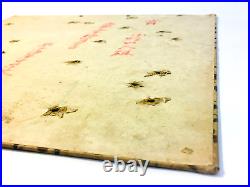
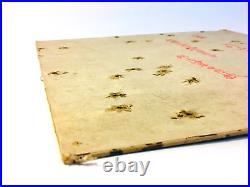
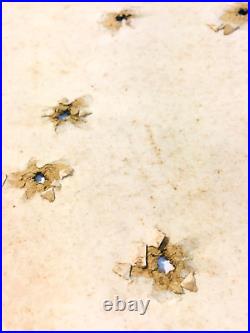

This is Japanese M ilitary art, War art. This is an oil painting of a Type 89 medium tank created in 1922 on paperboard. Its size is 333×307 mm. It appears to have been used as a target for airsoft guns during military training at a junior high school, and awarded to outstanding participants. On the reverse side, there are inscriptions with the recipient’s name “Hisao Onoda, ” the school name, and the words “Award” and November 20th, Taisho 11. On the surface, there are bullet marks with the names of students and the instructor (Captain Okamoto). In the middle of the tank’s body, there are marks with the recipient’s name “Hisao Onoda” and his shooting. He likely targeted and hit the tank’s engine area with his shots. Please judge the details from the image. For second-hand goods, be sure to check the photos! Thank you for visiting! I’m listing a variety of items, with a focus on vintage Japanese toys such as Menko and trading cards, among other things. If you’re looking for a product, please feel free to inquire, regardless of the genre. I will search for what you’re looking for and provide a listing. Here is my product list. Please rest assured that I will pack everything carefully. We are located in Japan. It’s our pleasure to make you happy by proposing our recommend item. If you have any questions or request about items, please feel free to ask us. Our products are 100% Authentic. We are really glad to have a deal with people all over the world. International Buyers – Please Note.


Japanese Rising Sun 6th Class Medal in Case. NNJ408
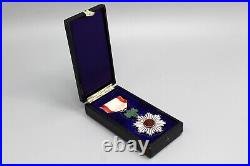
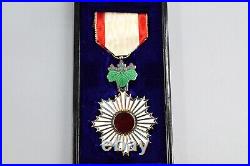
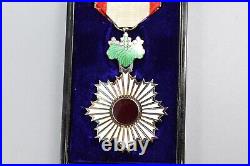
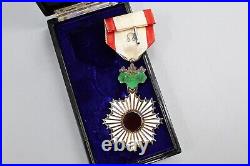

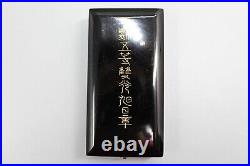

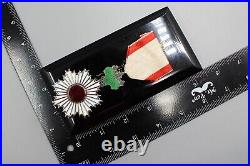

Japanese Rising Sun 6th Class Medal in black lacquered case. I believe this one is from approximately 1930s-1950s era. In good overall condition. The Order of the Rising Sun (issued from approximately 1875 – 2003), established by Emperor Meiji, was awarded to those who have made distinguished achievements in international relations, promotion of Japanese culture, advancements in their field, development in welfare or preservation of the environment. Basically, awarded for long and/or especially meritorious civil or military service.


Japanese Rising Sun 6th Class Medal. MDJ129
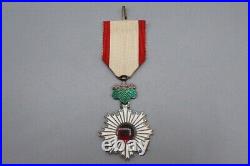
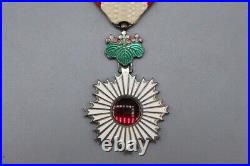
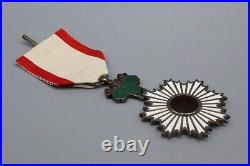
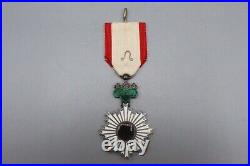
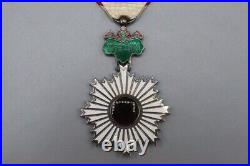



Japanese Rising Sun 6th Class Medal. I believe this one is from approximately 1930s-1950s era. In good overall condition with some minor surface, edge chipping. The Order of the Rising Sun (issued from approx 1875 – 2003), established by Emperor Meiji, was awarded to those who have made distinguished achievements in international relations, promotion of Japanese culture, advancements in their field, development in welfare or preservation of the environment. Basically, awarded for long and/or especially meritorious civil or military service.


Japanese Commemorative Medal of 1937 Incident Marco Polo Bridge 55 mm Diameter



PLEASE FOLLOW OUR E BAY STORE. SALE SEE OUR STORE. PLEASE READ WHOLE ADD. Japanese Commemorative Medal of 1937 Incident Marco Polo Bridge 55 mm Diameter. Offering a Japanese commemorative medal. The medal was issued by Japan commemorating the July 7 1937 incident at the Marco Polo Bridge. The incident resulted in the Second Sino-Chinese War. Check out the photos. Marco Polo Bridge incident. Part of the Second Sino-Japanese War. Aerial photo of the Marco Polo Bridge. Is on the opposite side of the river. Start of the Second Sino-Japanese War. Disputed starting date of World War II. 100 troops at the bridge. Military campaigns of the. The Marco Polo Bridge incident, also known as the Lugou Bridge incident. Or the July 7 incident. Was a battle during July 1937 in the district of Beijing between China. S National Revolutionary Army. And the Imperial Japanese Army. Since the Japanese invasion of Manchuria. In 1931, there had been many small incidents along the rail line connecting Beijing. With the port of Tianjin. But all had subsided. In this incident, a Japanese soldier was temporarily absent from his unit opposite Wanping. And his commander demanded the right to search the town for him. The Marco Polo Bridge incident is generally regarded as the start of the Second Sino-Japanese War. And the Pacific theatre. Of World War II. In English, the battle is usually known as the “Marco Polo Bridge incident”. The Marco Polo Bridge. Is an eleven-arch granite bridge, an architecturally significant structure first erected under the Jin dynasty. And later restored during the reign of the Kangxi Emperor. Of the Qing dynasty. It gained its Western name from its appearance in Marco Polo. S record of his travels. It is also known as the “Lukouchiao”. From the local name of the bridge, derived from a former name of the Yongding River. This is the common name for the event in Japanese. Rokokyo Jiken and is an alternate name for it in Chinese and Korean. The same name is also expressed or translated as the. Battle of Lugou Bridge. In China and Korea, it is known more often as the. Tensions between the Empire of Japan. And the Republic of China. Had been heightened since the Japanese invasion of Manchuria. In 1931 and their subsequent creation of a client state, Manchukuo. The deposed Qing dynasty. Emperor, as its chief of state. After the invasion, Japanese forces extended their control further into northern China, seeking to obtain raw materials and industrial capacity. A commission of inquiry from the League of Nations. Published the Lytton Report. Which was critical of the Japanese, resulting in Japan quitting the League. (KMT) government of China refused to recognize Manchukuo but did agree to the Tanggu Truce. With Japan in 1933. Subsequently, there were various “incidents”, or armed clashes of a limited nature, followed by a return to uneasy peace. The significance of the Marco Polo Bridge incident is that, following it, tensions did not subside again; instead, there was an escalation, with larger forces committed by both sides and fighting spreading to other parts of China. With hindsight, this small incident can, therefore, be regarded as the start of a major conflict. By the terms of the Boxer Protocol. Of 7 September 1901, China had granted nations with legations in Beijing. The right to station guards at twelve specific points along railways connecting Beijing with Tianjin. This was to ensure open communications between the capital and the port. By a supplementary agreement on 15 July 1902, these forces were allowed to conduct maneuvers without informing the authorities of other nations in China. Allied Commander-in-Chief in the China theater from 1942 to 1945. By July 1937, Japan had expanded its forces in China to an estimated 7,000 to 15,000 men, mostly along the railways. This number of men, and the amount of concomitant matériel, was several times the size of the detachments deployed by the European powers, and greatly in excess of the limits set by the Boxer Protocol. By this time, the Imperial Japanese Army. Had already surrounded Beijing. On the night of 7 July, the Japanese units stationed at Fengtai. Crossed the border to conduct military exercises. Japanese and Chinese forces outside the town of Wanping. A walled town 16.4 km (10.2 mi) southwest of Beijing-exchanged fire at approximately 23:00. The exact cause of this incident remains unknown. When a Japanese soldier, Private Shimura Kikujiro, failed to return to his post, Chinese regimental commander Ji Xingwen. (219th Regiment, 37th Division, 29th Army) received a message from the Japanese demanding permission to enter Wanping to search for the missing soldier; the Chinese refused. , by this time both sides were mobilizing, with the Japanese deploying reinforcements to surround Wanping. Later that night, a unit of Japanese infantry attempted to breach Wanping’s walled defenses but were repulsed. An ultimatum by the Japanese was issued two hours later. As a precautionary measure, Qin Dechun. The acting commander of the Chinese 29th Route Army, contacted the commander of the Chinese 37th Division, General Feng Zhian. Ordering him to place his troops on heightened alert. Japanese forces bombarding Wanping Fortress. At 02:00 on 8 July, Qin Dechun. Executive officer and acting commander of the Chinese 29th Route Army, sent Wang Lengzhai, mayor of Wanping. Alone to the Japanese camp to conduct negotiations. However, this proved to be fruitless, and the Japanese insisted that they be admitted into the town to investigate the cause of the incident. At around 04:00, reinforcements of both sides began to arrive. The Chinese also rushed an extra division of troops to the area. Within five minutes of Wang’s return, a shot was heard, and both sides began firing. Thus marking the commencement of the Battle of Beiping-Tianjin. And, by extension, the full scale commencement of the Second Sino-Japanese War. At 04:50 on 8 July 1937. Led the Chinese defenses with about 100 men, with orders to hold the bridge at all costs. The Chinese were able to hold the bridge with the help of reinforcements, but suffered tremendous losses. At this point, the Japanese military and members of the Japanese Foreign Service began negotiations in Beijing with the Chinese Nationalist government. A verbal agreement with Chinese General Qin was reached, whereby. An apology would be given by the Chinese to the Japanese. Punishment would be dealt to those responsible. Control of Wanping would be turned over to the Hopei. And not to the Chinese 219th Regiment. The Chinese would attempt to better control “communists” in the area. This was agreed upon, though Japanese Garrison Infantry Brigade commander General Masakazu Kawabe. Initially rejected the truce and, against his superiors’ orders, continued to shell Wanping for the next three hours, until prevailed upon to cease and to move his forces to the northeast. Although a ceasefire had been declared, further efforts to de-escalate the conflict failed, largely due to actions by the Chinese Communists. And the Japanese China Garrison Army. Due to constant Chinese attacks, Japanese Garrison Infantry Brigade commander General Masakazu Kawabe. Ordered Wanping to be shelled on 9 July. The following day, Japanese armored units joined the attack. The Chinese 219th regiment staged an effective resistance, and full scale fighting commenced at Langfang. After launching a bitter and bloody attack on the Japanese lines on the 27 July, General Sung was defeated and forced to retreat behind the Yongding River. By the next day. Main article: Battle of Beiping-Tianjin. On 11 July, in accordance with the Goso conference, the Imperial Japanese Army General Staff. Authorized the deployment of an infantry division. From the Chosen Army. Two combined brigades from the Kwantung Army. And an air regiment composed of 18 squadrons as reinforcements to Northern China. By 20 July, total Japanese military strength in the Beiping-Tianjin area exceeded 180,000 personnel. The Japanese gave Sung and his troops “free passage” before moving in to pacify resistance in areas surrounding Beijing and Tianjin. After 24 days of combat, the Chinese 29th Army was forced to withdraw. The Japanese captured Beiping and the Taku Forts. At Tianjin on 29 and 30 July respectively, thus concluding the Beiping-Tianjin campaign. However, the Japanese Army had been given orders not to advance further than the Yongding River. In a sudden volte-face. The Konoe government’s foreign minister opened negotiations with Chiang Kai-shek. S government in Nanjing and stated: Japan wants Chinese cooperation, not Chinese land. Nevertheless, negotiations failed to move further. On 9 August 1937, a Japanese naval officer was shot in Shanghai. Escalating the skirmishes and battles into full scale warfare. The 29th Army’s resistance (and poor equipment) inspired the 1937 Sword March. , which-with slightly reworked lyrics-became the National Revolutionary Army. S standard marching cadence. And popularized the racial epithet. To describe the Japanese invaders. Damage from the Japanese shells on the wall of Wanping Fortress is marked with a memorial plaque now. The texts on the stone drums below summarizes the history of the war that followed the incident. The heightened tensions of the Marco Polo Bridge incident led directly to full-scale war between the Empire of Japan. With the Battle of Beiping-Tianjin. At the end of July and the Battle of Shanghai. In 1937, during the Battle of Beiping-Tianjin. The government was notified by Muslim General Ma Bufang. Of the Ma clique. That he was prepared to bring the fight to the Japanese in a telegram message. Immediately after the Marco Polo Bridge incident, Ma Bufang arranged for a cavalry division under the Muslim General Ma Biao. To be sent east to battle the Japanese. Ethnic Turkic Salar Muslims. Made up the majority of the first cavalry division which was sent by Ma Bufang. 7 July 1937 is sometimes given as an alternative starting date for World War II. As opposed to the more commonly-cited date of 1 September 1939, when Germany invaded Poland. Starting the European theatre of the war. In 1987, the bridge was renovated and the People’s Anti-Japanese War Museum. Was built near the bridge to commemorate the anniversary of the start of the Sino-Japanese War. There is debate over whether the incident could have been planned like the earlier Mukden incident. Which served as a pretext for the Japanese invasion of Manchuria. According to Jim Huffman this notion has been “widely rejected” by historians, as the Japanese would likely have been more concerned over the threat posed by the Soviets. Controversial conservative Japanese historian Ikuhiko Hata. Has suggested that the incident could have been caused by the Chinese Communist Party. Hoping it would lead to a war of attrition. Between the Japanese army and the Kuomintang. However, he himself still considers this less likely than the “accidental shot” hypothesis, that the first shot was fired by a low-ranking Chinese soldier in “an unplanned moment of fear”. National Revolutionary Army (Kuomintang). See also: National Revolutionary Army. In comparison to their Japanese counterparts, the 29th Route Army, and generally all of the NRA for that matter, was poorly equipped and under-trained. Most soldiers were armed only with a rifle and a dao. A single-edged Chinese sword. Similar to a machete. Moreover, the Chinese garrison in the Lugouqiao area was completely outnumbered and outgunned; it consisted only of about 100 soldiers. Commander of 29th Army. Legislative Committee Head of Peking security forces. Vice-Commander of 29th Army. General Tong Lin’ge. Commander of the 143rd Division. General Feng Zhi’an. Commander of the 37th Division. Commander of the 132nd Division. Commander of the 38th Division. Commander of the 219th Regiment under the 110th Brigade of the 37th Division. The Japanese China Garrison Army. Was a combined force of infantry, tanks. Which had been stationed in China since the time of the Boxer Rebellion. Its headquarters and bulk for its forces were in Tianjin, with a major detachment in Beijing to protect the Japanese embassy. Lieutenant General Kan’ichiro Tashiro. Commander China Garrison Army. Major General Masakazu Kawabe. Commander China Garrison Infantry Brigade. Commander 1st Infantry Regiment. Commander, 3rd Battalion, 1st Infantry Regiment. W of Marco Polo Bridge, 510 men.

1905 Japanese Emperor Taisho Declaration Of Peace Scroll
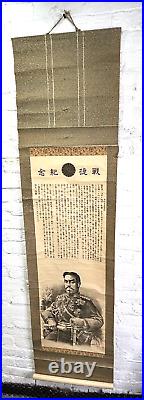
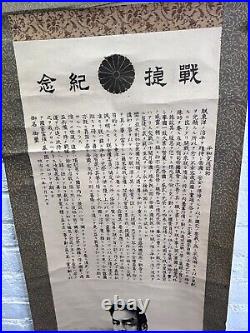
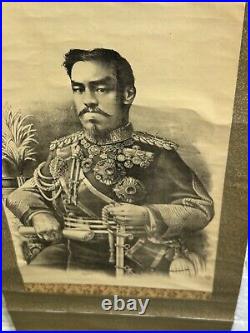
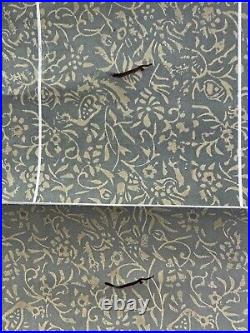

1905 Japanese Emperor Taisho Declaration Of Peace Scroll. It measures 17 inches wide by 69 inches long. Has some stains, creases and a bug damage holes, but still displays great.

